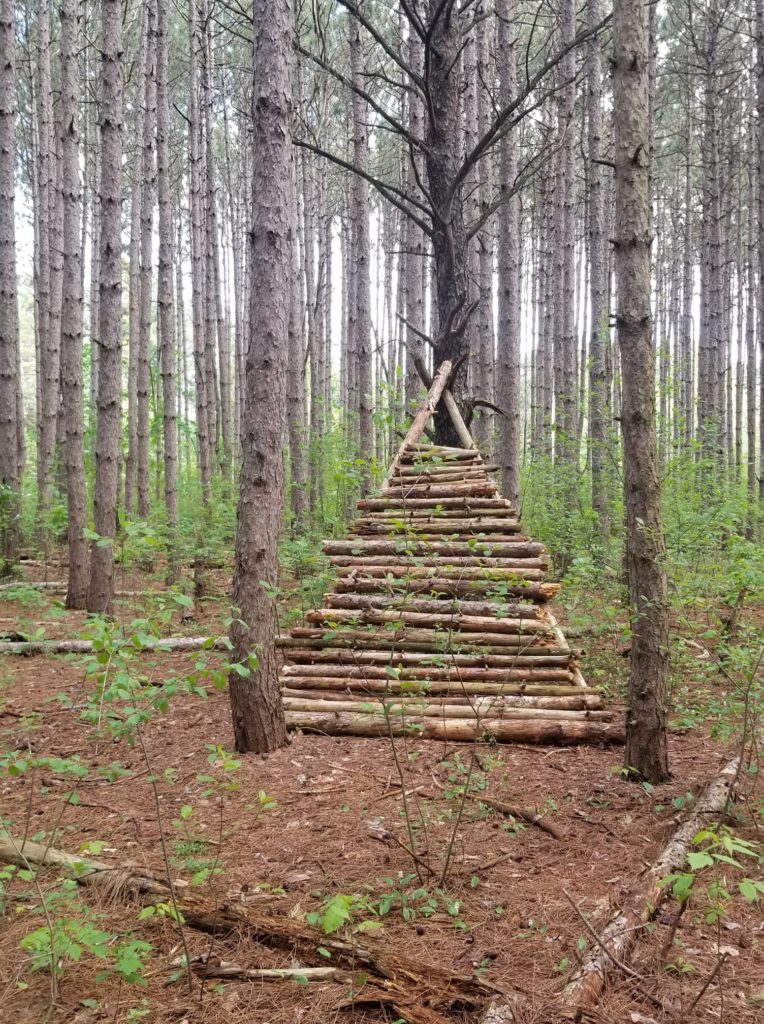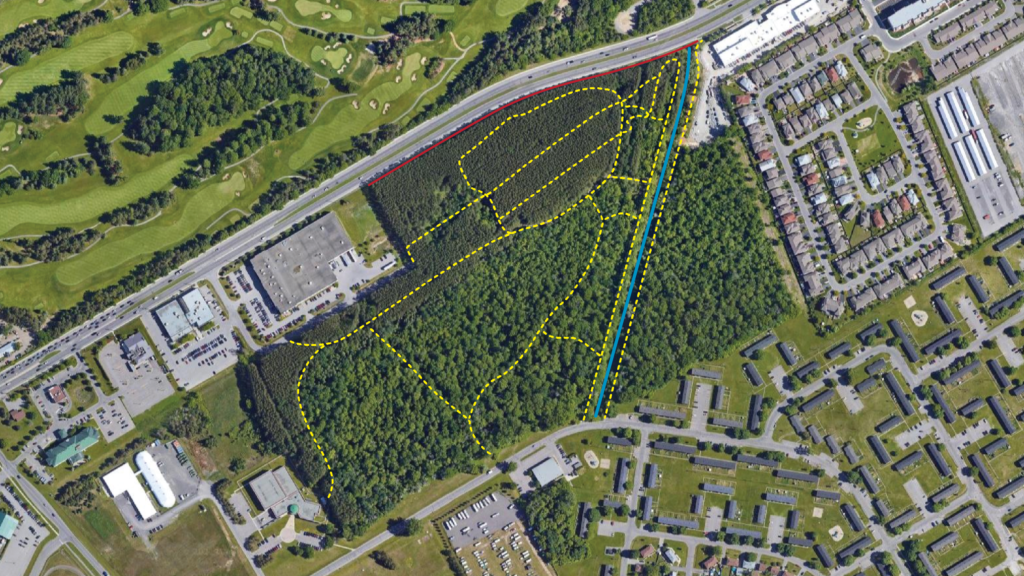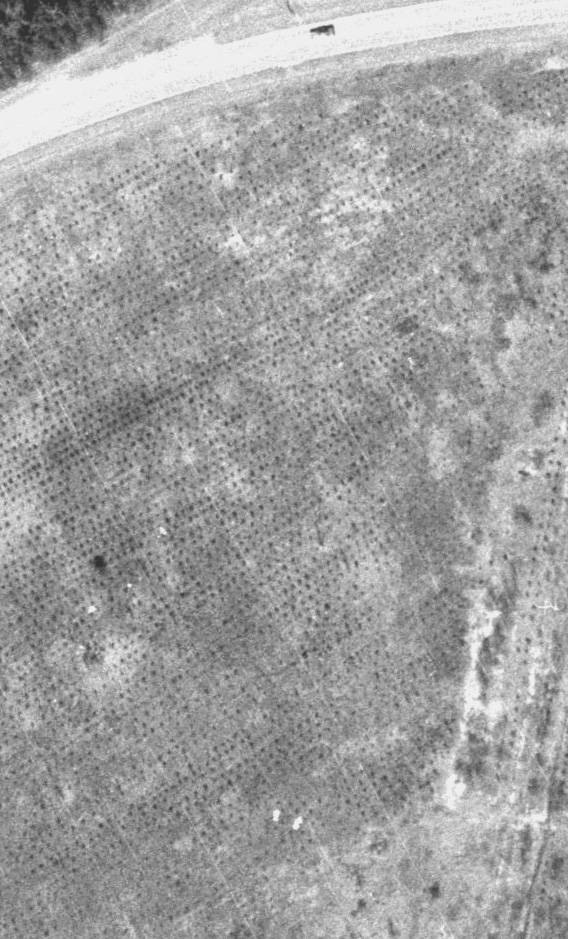“Nature’s Cathedral”
Hunt Club Forest contains a natural forest, and a plantation of Red Pine (Pinus_resinosa). Through many decades, this plantation has provided a large amount of carbon sequestration, and beneficial outdoor green space for residents, aiding in relaxation and mental health. The roots and leaf litter of a plantation helps increase soil health, and provides value in tree canopy, shade, reducing air and noise pollution.
With the growing destruction of trees in our city, the previous rules of expansion and development for the sake of economic growth at all costs, NEED to be reassessed and changed.Do trees in a plantation sequester less carbon than those in a forest? If yes, at what point do we say that that amount is inconsequential, during a climate crisis?

Active Community in the Forest

Through the decades, this forest has formed many trails, as local residents spend time here to walk their dog, jog, find relaxation, or improve their overall mental health. Being around trees helps to reduce stress, anger, fatigue, sadness and anxiety. Spending time around trees can also help to increase energy. These are all effects that Health Canada has also promoted through the City’s Urban Forest Management Plan.
It is ideal on really hot summer days, as the forest canopy provides cover from strong UV rays, and also provides dogs a comfortable space to be walked. Evaporation from a single tree can produce a cooling effect equivalent to 10 room size air conditioners operating 20 hours a day.
Kids have been able to use the green space instead of sitting in front of television screens all day. They have used it to build creative forts, and ramps to ride their bikes, far away from busy traffic. If you walk through these trails you will find these, as well as other creations such as bridges, fairy-houses and even impressive shelter constructions.

DETERMINING THE SIZE AND AGE OF THE PINE TREES
In the 1965 aerial photograph, one can clearly see a vehicle travelling along Hunt Club Road. This allows the ability to take some fairly accurate measurements for purposes of comparison.
- The ratio of the car to tree is about 5:1 or 10:2
- The average length of a car in 1965 was 20 ft. which suggests the trees are 4 ft. in diameter.
- If the road width is 30 ft, (a typical 2 lane paved road), then the ratio of the road width to the trees is 15:2, or 30:4. This supports that the trees (with branches) are about 4 ft. in diameter in 1965.
According to the USA Forest Services*, red pines grow less that 10 inches per year in the first 4 years. That then increases to 12 to 24”. Using calculation, a tree that is approximately 4 ft. wide, would be about 5’5” (65″) in height.
- Total Height of 65”
- 4 years @ 9” = 36”
- 65″ – 35″ = 30”
- 30” = additional 2 years of growth
- Therefore, the trees are approximately 6 years old in 1965.
In Ottawa’s New Official Plan, section 2.4.2 defines Urban Significant Woodland as “In the urban area, any area 0.8 hectares in size or larger, supporting woodland 60 years of age and older at the time of evaluation“. The land is federally owned, but shows how the City of Ottawa has put dedication towards policies regarding older growths when it is subjected to development.

Benefits of an Urban Forest
Urban forests can help cities adapt to a changing climate, cooling air temperatures and reducing flood risk by absorbing excess rainfall. They also absorb CO2 emissions and filter air pollutants. At the same time, they support birds and wildlife, offer recreational areas, and increase property values. The table below highlights some of the many benefits of urban forests. [ Source: Growing Forests in a City: Case Study ]
Reduce GHGs
Between 1990 and 2018, urban trees removed an average of 2.4 Mt of GHGs per year according to the National Inventory Report. Urban forests also contribute to GHG emission reductions by reducing air conditioning needs in nearby buildings.
Cool the Air
Large trees reduce ambient air temperatures with their shade and through evapotranspiration, cooling the air by as much as 1-5 degrees Celsius
Limit Flooding
Climate change will increase the frequency and intensity of storms and rainfall in some regions. Permeable, natural surfaces allow water to seep into the ground and reduce total amount and slow rate of runoff, reducing the risk that wastewater and stormwater systems overflow. Root systems from trees and shrubs make it easier for water to infiltrate the soil and soak up large quantities of water.
Support Biodiversity
Connected urban forests can provide corridors for plants and animals to move. This is increasingly important as a changing climate leads to shifts in habitat as urban areas expand.
Clean Air
Extreme heat associated with climate change is projected to increase concentration of ground level ozone, and more frequent and intense wildfires will make particulate matter pollution worse in some areas. Trees can help filter airborne particulate matter and absorb ground level ozone and other pollutants.
Food / Medicine
Green spaces can increase food security and build healthier communities. If urban forests are combined with community gardens, they can provide the opportunity to source healthy food and support lower income families. Indigenous-led green spaces can also provide space to share knowledge and traditions
General Health
Urban forests provide opportunities to practice both physical and relaxing activities. The mere presence of greenery is shown to improve mental health, with some doctors now prescribing nature alongside other treatments.